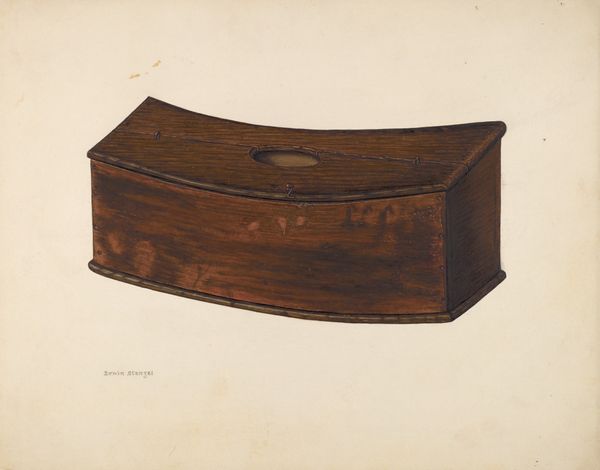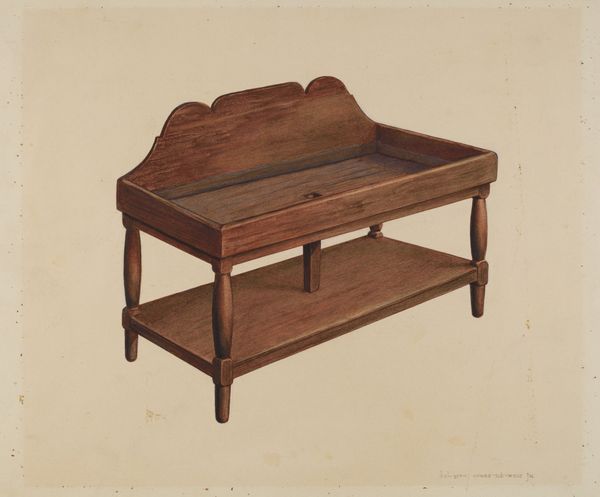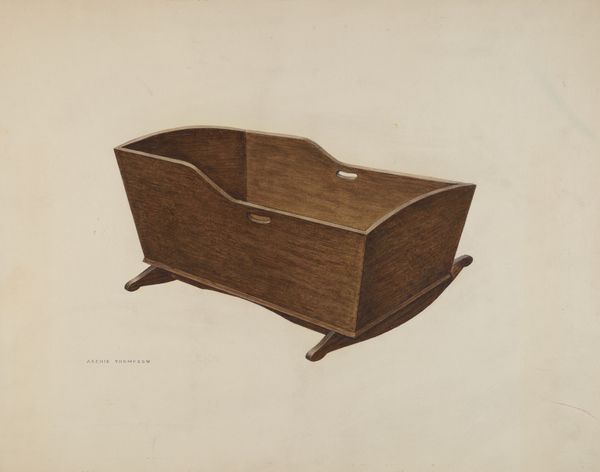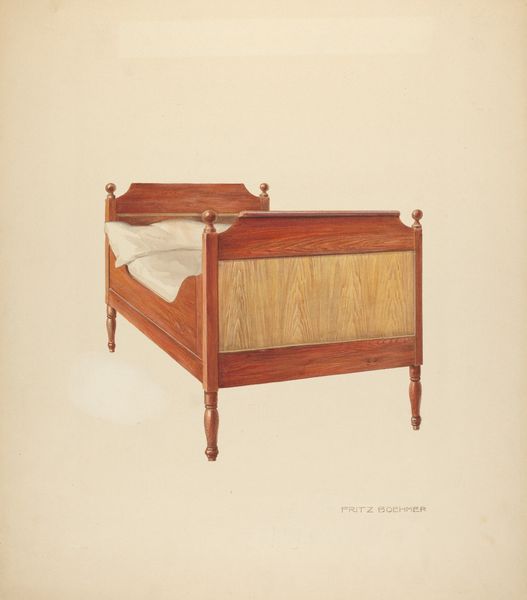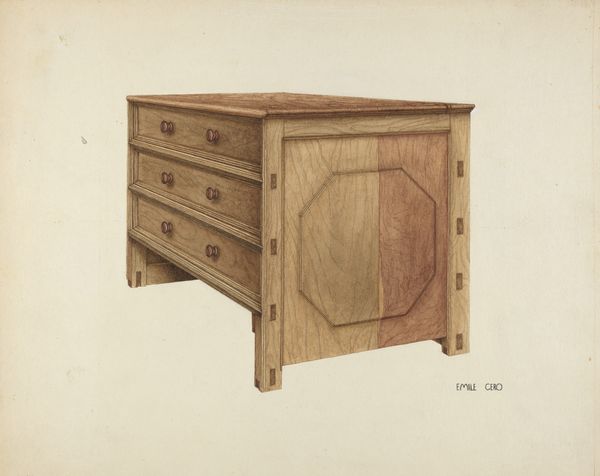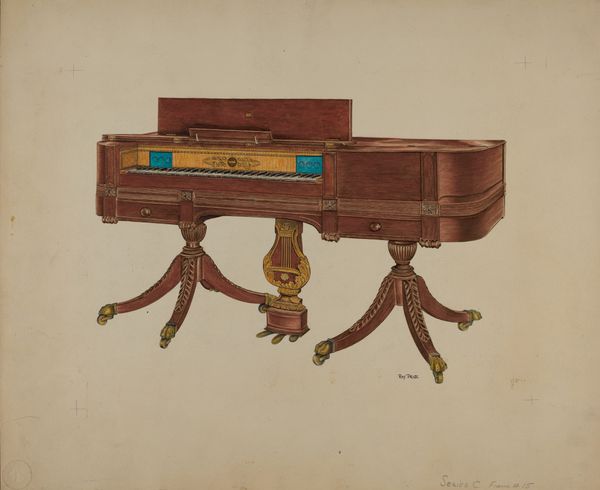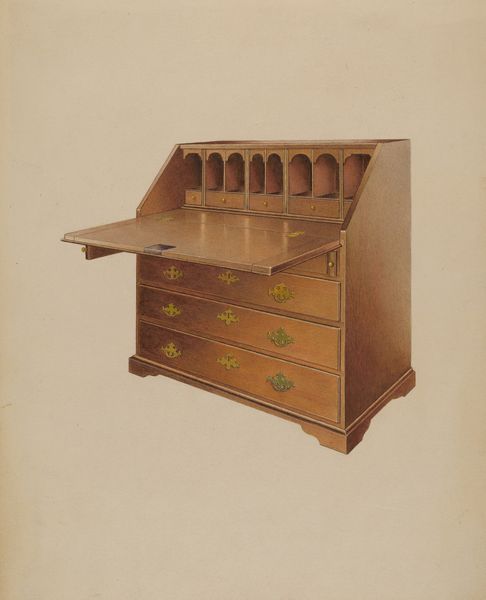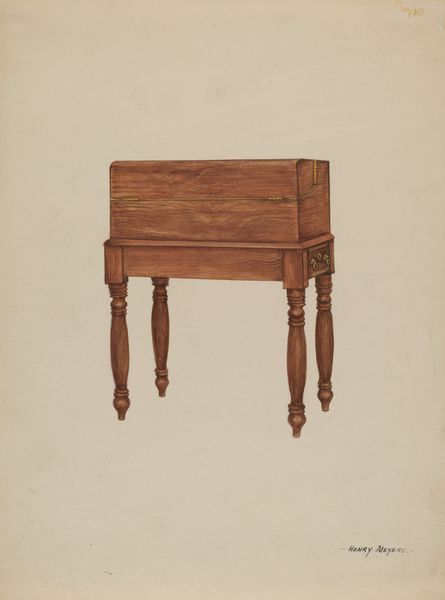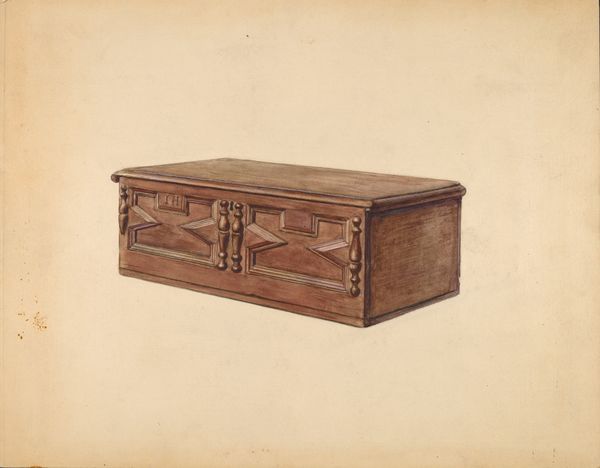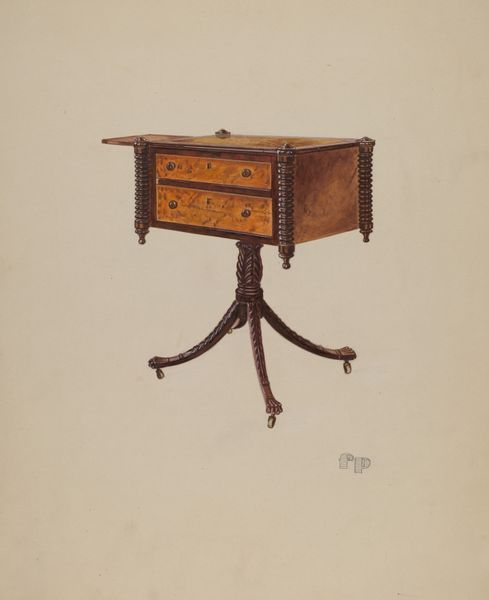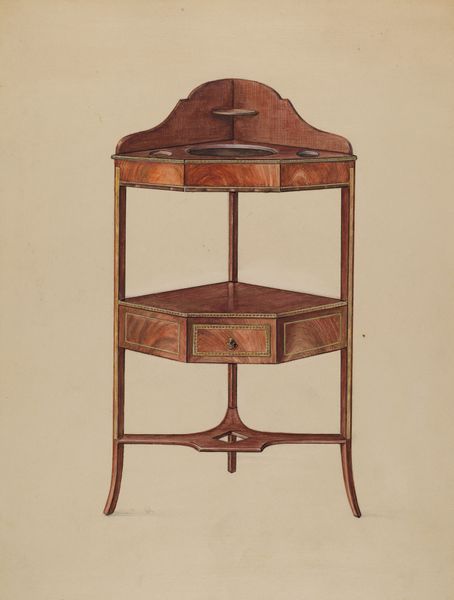
drawing, watercolor
#
drawing
#
watercolor
#
ceramic
#
watercolour illustration
#
academic-art
#
watercolor
Dimensions: overall: 30.7 x 38.3 cm (12 1/16 x 15 1/16 in.)
Copyright: National Gallery of Art: CC0 1.0
Curator: Here we have Fritz Boehmer's watercolor and drawing titled "Zoar Child's Bed," created around 1938. It's a really beautiful study of domestic life and craftsmanship from that era. Editor: It does feel very safe, almost stubbornly so. It makes me want to wrap myself in a quilt and smell cookies baking! But in all seriousness, there's a quiet intimacy to the piece. I almost feel like I am standing in the corner of the bedroom looking at this bed and getting a glimpse of a simpler, kinder life. Curator: The "Zoar" designation is particularly interesting here. The Zoarites were a German Separatist religious community known for their self-sufficiency and craftsmanship. The aesthetic prioritizes utility, reflecting values central to that community in Ohio. We are given the sense this drawing documents and perhaps elevates their craftsmanship, and promotes the role it plays within that community. Editor: So this seemingly straightforward depiction isn't really just a pretty picture; it represents values, a lifestyle. Makes it more complex, for sure! What strikes me the most is the level of detail Boehmer gets with just watercolor and drawing, particularly in showing the natural wood grains. There's real affection for the craft, it seems, in every line. Curator: Absolutely. And by recording the artifact through visual art he both acknowledges this is how most people will now come to understand Zoarite culture, and perhaps comments on the nature of change as America industrializes, changing attitudes around craft and religion. But look closer at the child's bed—note the high sides, those decorative bars. Do you think it feels restrictive? Editor: Restrictive... perhaps in its sturdiness, yeah, there is almost something a little too safe, in that there is a removal, and yet... safe might have been everything during that time. It also strikes me the fact there’s no child in the drawing actually heightens the absence, a void of laughter that, when filled with imagination, almost haunts this domestic scene. Curator: I agree. What this watercolor provides is far more than just art object or historical object. The fact it merges those together lets us view material culture as art, in the past and even now. It emphasizes the connection between how communities work and what they value. Editor: And for me? It’s that surprising depth of emotional experience within a quiet composition—the ghost of lullabies almost hums around it. What’s hidden there might well be the point. Thanks to that subtlety I get a better sense of connection to it all, not just information.
Comments
No comments
Be the first to comment and join the conversation on the ultimate creative platform.
